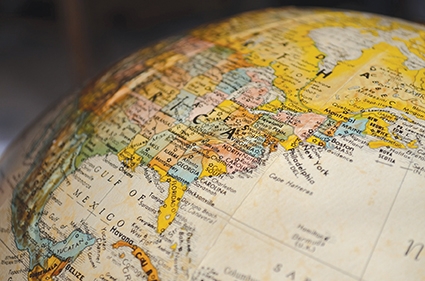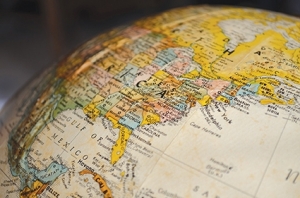Understanding How the World Has Changed
Op-Ed
The modern world has changed in a dramatic way over the past century. The question is interesting for Georgia as to what place the country has and will have in that quickly-evolving world. Political analysts often speak about what Georgia’s position will be in the region with a focus on the various military and political sides. However, beyond that, successive Georgian governments should also look at the wider and more important global dynamics playing out. In this article, I would like to outline the major trends disrupting existing modern processes in the world and ushering in a new world order for the next decades.
There are three major developments: trade, telerobotics, and world population dynamics, which shape the modern world. The first two are very much interrelated. In trade, steamship was replaced by containerized shipping in the 1980s, decreasing the cost of moving goods across borders. The technology revolution which took place in the 1990s facilitated the movement of ideas around the globe. This also means that advances in telerobotics eventually caused geographic barriers to fall.
Dissemination of information has allowed many emerging countries to become part of the phenomenon called the “global supply chain” where everything from small details for smartphones to larger ones for cars are being created.
Another phenomenon is that in order to keep up growth, a country in the modern world needs investments in technology. Technology-driven economies are more competitive, but there is a dilemma because the advancement in technology will slowly introduce robots. This is what is currently called the Fourth Industrial Revolution.
The third major dynamic is that the world's population is getting older. The trend is seen across many parts of the world. Medical aid is becoming ever more effective, raising life expectancy levels. In ancient and medieval periods, large families were an economic asset since economies were agrarian and hard work was essential. In the modern world, women are less inclined to have children because of high costs. Women also are more inclined to pursue their professional careers. Fertility rates are declining: the number of children born per woman in the developed world is about 1-2 and the average birth rate is 3-6 children per woman. Nevertheless, the developing world, too, will at some point reach the red line after which fertility growth will stall. It could even happen that by 2050, the older population will outnumber children aged 0-14. This will mean that the labor force will decline significantly, forcing governments, in order to maintain economic growth, to invest further in technological advances.
However, with those three interlocking forces of trade, industrial revolution and population dynamics, the world has become a much more complicated place in the last 100 years to simply show on a geographic or political map. Instead, imagine looking at the map which, along with rivers, mountains and seas, also shows major highways, bridges, large factories, trade routes, big ports, airports and world supply chains across the oceans. It will be a fuller picture of the world we live in with consideration of major technological and scientific advances. New maps will also prove how geography is not as powerful as it has been for millennia. Humankind made too many changes to geography. For instance, progress in military technologies enables a country to cross the mountains or deserts. Internet and various supply chains made up of global companies such as Amazon, eBay, etc. changed the perception of state frontiers. True, it does not happen in very country around the globe: consider North Korea or Turkmenistan, but it nevertheless shows how for the first time in recorded history, the world has become an interconnected place through advances in military and scientific spheres. Consider the European Union: frontiers play a minor role and economic progress trumps Europe’s geography. North America, Canada and Mexico are already considered as a future trilateral economic powerhouse where frontiers will fall and joint highways, pipelines and other infrastructure will run through the entire continent from Alaska to the south of Mexico.
This intersection of population, trade and technology dynamics creates a powerful force which impacts not only human behavior, but also that of entire states. It is those forces which Georgian governments should consider when trying to find what place Georgia occupies in the region and the within the wider world.
Emill Avdaliani












